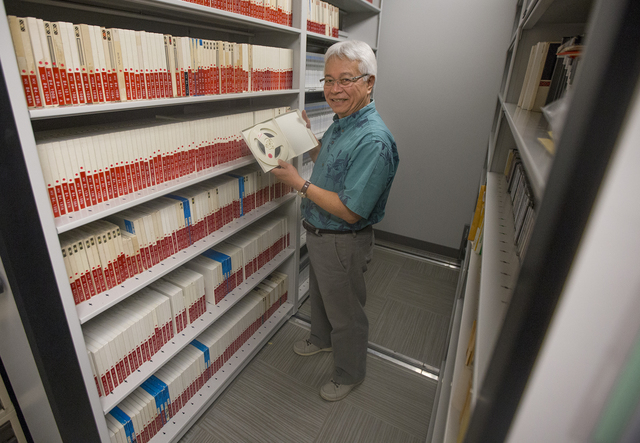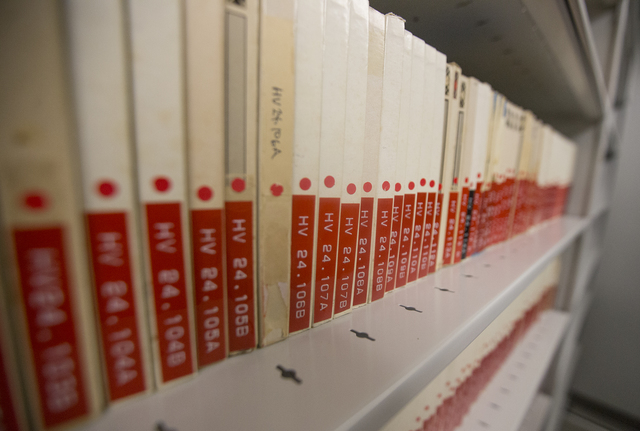When Larry Kimura and his students first arrived at KCCN in Honolulu with a pitch for a new Hawaiian-language radio show, the station manager had one question. ADVERTISING When Larry Kimura and his students first arrived at KCCN in Honolulu
When Larry Kimura and his students first arrived at KCCN in Honolulu with a pitch for a new Hawaiian-language radio show, the station manager had one question.
“Do you have an audience?”
It was 1972. Hawaiian was dying out. Most native speakers were kupuna — and there were not many left. It was still technically illegal to speak Hawaiian in schools. Who was going to listen to a program conducted entirely in Hawaiian?
“But he was kind enough to say, ‘All right,’” Kimura, now 69 and an associate professor of Hawaiian language and culture at the University of Hawaii at Hilo, recalled last week.
Ka Leo Hawaii was given two one-hour slots per month, on Sundays at 8 p.m. The first program aired on Feb. 22, and featured Kimura interviewing musician John Almeida.
“(Almeida) was very open to it,” Kimura said. “He’d had his own Hawaiian-language radio show for a very short little blip, so it was a good way to start.”
At the time, Kimura was teaching Hawaiian at UH- Manoa. Most of his students had never heard native speech before. But they wanted to hear it, and hit upon the radio show as a way to access the aural side of Hawaiian.
And as it turned out, the students weren’t the only ones eager to listen to manaleo, or native speakers.
“People just loved it,” Kimura said. They’d call in to chat in Hawaiian with Kimura and the featured guests, most of whom were kupuna. Sometimes high schoolers would call in. Sometimes there’d be a call from a 4-year-old on Niihau.
A month after its initial air date, Ka Leo Hawaii was on the radio once a week. It was broadcast during the fall and spring semesters with a break during the summer. It gained sponsorship from the Honolulu Gas Company, and was staffed entirely by volunteers.
Kimura continued the show for 16 years — 417 programs in all — until he moved to the Big Island (from 1991 to 2000, its final year, Ka Leo Hawaii was kept up by Puakea Nogelmeir).
From that first 1972 broadcast, recordings of the show were made, most of them on tapes from the UH-Manoa language labs, which Kimura demagnetized so they could be reused.
There are hundreds of these 7-inch reels. They’re lined up in chronological order, red labels noting original air date, in a temperature-controlled room inside the library of UH-Hilo’s Hale Olelo. There are also hundreds of backup reels with blue labels on them.
As technology changed, the backup system changed — cassettes, then CDs.
But all of the recordings are still tucked away on the vault shelves, and a language on a storage shelf is not an accessible one.
“It became very apparent to me that we should be putting it online,” Kimura said.
For years, he’d been busy with other efforts to bring Hawaiian back from the brink, namely establishing the Aha Punana Leo preschools that would create a new generation of young native speakers. Putting Ka Leo Hawaii on the web was an important project, but it would have to wait.
That wait ends Feb. 22, 44 years after the first 8 p.m. KCCN broadcast, when the first 12 episodes and their corresponding transcripts are released online as the first collection in UH-Hilo’s Kani Aina digital library. In the coming months, all 417 programs will be uploaded.
In a computer lab near the vault of tapes, second-year language student Justin Stoleson was editing footage from the lone existing video of the Ka Leo Hawaii program, helping prepare for this soft launch. UH alumna Myoung-Ja Wha has been helping with the transcription process (there’s no computer program that can hear Hawaiian and turn it into written form).
Transcriptions are invaluable, Kimura said, because they are searchable. But there’s nothing like hearing language sounds and rhythms in their natural habitat, making resources like the Ka Leo Hawaii recordings all the more useful for native speakers and new learners alike. Textbooks can only do so much — to really grasp the intricacies of language, you have to hear it and speak it.
That’s something Kimura knows first-hand: He learned Hawaiian as a second language, drawn to it after hearing it spoken by his grandmother while growing up at Parker Ranch. Interviewing native speakers was a boon for his own path to fluency.
“I’d listen and hear all my mistakes,” he said, joking that his students could have written an entire paper about the errors.
In the 1970s, KCCN could reach listeners on all of Oahu and, at night when there was less interference on the airwaves, most of the neighbor islands.
“In those days, it was Hawaii,” Kimura said. “Today, it might be the world.”
There’s an audience.
The first 12 programs of Ka Leo Hawaii and their transcripts will be available to all on Feb. 22. They can be accessed at www.ulukau.org.
Email Ivy Ashe at iashe@hawaiitribune-herald.com.




